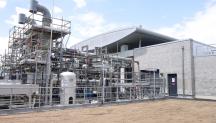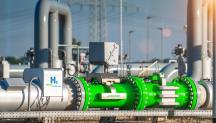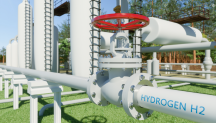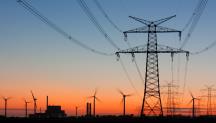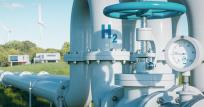
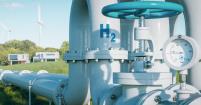
Creating a new hydrogen economy is a massive undertaking: Interview with an Expert
Newsletter
Key Facts
Interview with Barbara Jinks, Programme Officer – Green Gas delivery and Use, Innovation and Technology Centre, IRENA
At the 24th Council meeting of the International Renewable Energy Agency (IRENA), hydrogen took centre stage as members discussed priority areas for the organisation’s ongoing work on green hydrogen. Held on 27th October, the event titled “Accelerating Hydrogen–Opportunities for International Cooperation” delivered a high degree of engagement among IRENA’s membership on the key issues of accelerating the production, delivery and use of green hydrogen. In an interview, Barbara Jinks provides an overview of IRENA’s global initiatives since 2018 to promote the hydrogen trade.
IRENA has been building knowledge on green hydrogen since 2018. Take us through the Agency’s work on what has been described as the “rockstar” of the energy transition.
Our work on hydrogen started in 2018 when we analysed the potential of green hydrogen in the energy transition. That kicked off a series of studies that, has deepened and broadened over time, and is across the entire supply chain. Through our analyses and collaboration with Members, partners and industry, we have built knowledge on the trade, market design, infrastructure, regulation, certification, innovation, and financing green hydrogen. We also look at cross-cutting issues of hydrogen certification, supply chain, repurposing the gas grid, critical materials and policy measures. Earlier this year, we launched the “Geopolitics of the Energy Transformation: The Hydrogen Factor” providing a comprehensive analysis of the geopolitical drivers and outlook of the development of clean hydrogen value chains.
With the announcement of the G7 Hydrogen Action Pact (HAP) in May 2022, and upon request of the German G7 presidency, IRENA developed a detailed set of recommendations to accelerate the deployment of low carbon and green hydrogen, including actions for international harmonisation of sustainability criteria for green hydrogen, standards and certification, balanced supply and demand, and the promotion of hydrogen for industrial use. IRENA made the recommendations after reviewing existing G7 country policies and national hydrogen strategies, as well as conducting a gap analysis of enabling measures. It is important to note that the G7 groups of countries has a unique opportunity to be the leaders in the development of policies and enabling measure frameworks to facilitate a new hydrogen economy.
IRENA, together with UNFCCC High-level Champions and International Energy Agency, issued the “Breakthrough Agenda Report” in September 2022. The report offers an independent assessment of the most efficient status of hydrogen and provides recommendations for international collaboration. The Agency is co-hosting a workshop for the G7 HAP on 1 December to launch the implementation of the recommendations.
According to the “World Energy Transition Report” for 2022, hydrogen can help mitigate 10 percent of the global CO2 emissions by 2050 and reach 12 percent of final energy demand. What is the role of global trade in meeting this demand?
IRENA geopolitical survey indicates that three quarters of global green hydrogen will be produced and used locally, and that one quarter will need to be traded between countries. This offers a large demand for global trade of hydrogen, targeted at reducing emissions in the hard-to-decarbonise-sectors, and reduce 10 percent of CO2 emissions. Research is being conducted into how to best ship hydrogen. The consensus is that liquid ammonia is the most suitable medium for hydrogen transportation. Most government-owned natural gas pipelines designed and manufactured to international standards can be repurposed for transporting hydrogen, reducing the risk of stranded assets--Assets suffering from write-downs, devaluations or a conversion to liabilities. Germany, for instance, estimates that 19 percent of its transmission and distribution lines can be used for hydrogen. Under the European Hydrogen Backbone initiative, 69 percent of the existing natural gas grids could be repurposed.
Clean hydrogen could help decarbonise industries that cannot be directly electrified. Considering that heavy industry contributes significantly to the total carbon emissions, how crucial is the rapid expansion of the hydrogen economy?
Rapid action is needed to unlock the significant hard-to-abate sector as there is no market now, and it must start from scratch, more or less. We see many projects and lots of plans and enthusiasm for low carbon and green hydrogen deployment, but it will still take years to develop, and we are racing against time to reduce emissions. It is still a very worthwhile aim: in the “World Energy Transitions Outlook: 1.5°C Pathway”, we have estimated that only 52 percent of end use can be electrified, and that 25 per cent of CO2 emissions cannot be abated through the use of renewables or electrification, and that this assumes that our energy processes are as efficient as possible. It is estimated that using hydrogen for heavy industry and transport that cannot be electrified can reduce emission by 12 percent and 26 percent respectively.
Tell us about the importance of international collaboration in developing the regulatory framework for hydrogen trade.
The need for international collaboration has never been more crucial. Countries need to work together and to agree on global hydrogen standards and certification. We have recommended G7 countries to collaborate more closely together, as well as with potential exporting countries to create a set of international standards and common sustainability criteria for the trade of low carbon and green hydrogen - and in doing so, lead the world by example. Today's hydrogen market is in the phase of a local point-to-point transaction. But in order to make it a global trade commodity, a certification system that allows different suppliers to sell hydrogen, and different buyers to know what they are buying, is needed. At present, we see a vertical hydrogen diplomacy between the buyer and seller; IRENA’s recommendation is to develop hydrogen diplomacy between countries with the focus on sustainability and global emissions reductions.
What are the key barriers in the development of international green hydrogen projects and trade?
At present, there is hardly any green hydrogen being traded across borders. Creating a whole new hydrogen economy is a massive undertaking and requires an open mindset that accepts the need for change. We have to move away from established energy systems based on fossil fuels, if not, they risk impeding the hydrogen industry’s development. Production of green hydrogen is not new, but to build the infrastructure for large scale hydrogen use, the planning must begin now. The cost, however, is not seen as a barrier anymore; with the increasing rise of gas prices, green hydrogen is becoming increasingly competitive.
Tell us about IRENA's upcoming hydrogen reports.
We are launching the Accelerating Hydrogen Deployment in G7 - Recommendations for the Hydrogen Action Pact on the IRENA Hydrogen Day on November 16 at COP27. Aligned with the focus of this year's COP on implementation, the report provides a list of recommendations for action by G7 leaders, but it is also applicable to all other countries who wish to become involved in hydrogen. Subsequently, at the final G7 group workshop of 2022, in December, the aim is to kick-off the implementation of the recommendations. The time for talking is over; now is time for action!

Expert Insight by:
Barbara Jinks
Programme Officer - Green Gas Delivery and Use, IRENA
